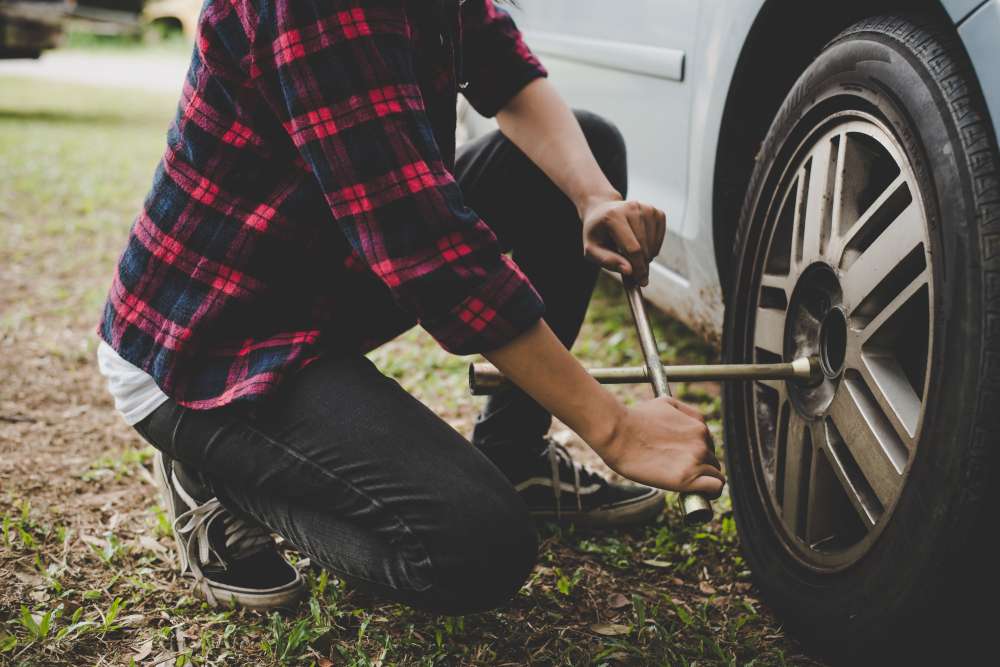
In today's fast-paced world, having a reliable mode of transportation is essential for most Americans. Whether commuting to work, running errands, or embarking on a road trip, our cars are integral to our daily lives. However, unforeseen emergencies can sometimes leave us stranded and vulnerable. That's why every driver must be equipped with essential emergency auto hacks to ensure safety and preparedness on the road. In this comprehensive guide, we'll explore some invaluable tips and tricks that could make all the difference in a crisis.
1. Changing a Flat Tire
One of the most common roadside situations is a flat tire. If you're far from a service station, understanding how to change a tire can save you money and time. First, open your trunk and locate your spare tire, jack, and lug wrench. Once the flat tire has been removed and replaced with the spare, raise the car and undo the lug nuts. Ensure the lug nuts are tightened in a star pattern to ensure even pressure distribution.
2. Jump-Starting a Car
A dead battery can leave you stranded, but jump-starting your car is a simple fix if you have the right tools. Keep a set of jumper cables in your vehicle at all times. Find a willing helper with a running car and position both vehicles facing each other. Connect the red (positive) cables to the positive terminals of each battery and the black (negative) cables to the negative terminals. Start the working car, wait a few minutes, then attempt to start your vehicle. Once it is running, let it idle for a few minutes to recharge the battery.
3. Emergency Kit Essentials
Every driver should have an emergency kit with essential items to handle roadside emergencies. Some must-have items include a flashlight, first-aid kit, reflective triangles or flares, bottled water, non-perishable snacks, a multi-tool or pocket knife, blankets, and a portable phone charger. These items can provide comfort and assistance until help arrives.
4. Dealing with Overheating
An overheating engine can escalate into a severe problem if not addressed promptly. If your temperature gauge starts climbing or you notice steam coming from under the hood, pull over safely and turn off the engine. Open the hood (carefully, as it may be hot) to allow heat to escape. Avoid opening the radiator cap, as it could release scalding hot steam. Check the coolant level once the engine has cooled and top it off if necessary. If the problem persists, seek professional help.
5. Escaping a Sinking Car
While rare, the possibility of encountering a submerged vehicle is a terrifying thought. In the event of a water-related accident, remain calm and act quickly to escape. Unbuckle your seatbelt, lower your windows, and exit through them if possible. If the windows are electric and won't open, use a window-breaking tool or any sturdy object to shatter the glass. Remember, it's crucial to act swiftly, as water pressure may make it difficult to open doors once submerged.
6. Improvising a Traction Aid
Getting stuck in snow or mud is frustrating, but with some creativity, you can improvise a traction aid using items you likely have on hand. Place floor mats, cardboard, or branches under your tires for additional traction. Alternatively, sprinkle salt, sand, or cat litter around your tires to improve grip. These makeshift solutions can help you quickly get unstuck and back on the road.
7. Handling a Fender Bender
Even the most careful drivers may get into a small collision. Put safety first after a collision and move your car to a secure area away from approaching traffic. Make sure you and your passengers are free of injuries, and contact emergency services if needed. Take pictures of the cars and any damage to them, and record the scene by exchanging contact and insurance details with the other driver. Report the occurrence to your insurance company as soon as you can.
Being prepared for emergencies is a crucial aspect of responsible driving. By familiarizing yourself with these emergency auto hacks, you can increase your safety and confidence on the road. Remember to regularly inspect your vehicle, maintain essential supplies in your emergency kit, and stay informed about crucial car maintenance. With these precautions, you'll be better equipped to handle whatever the road throws, ensuring a safer and more enjoyable driving experience for you and your loved ones. Stay safe out there!